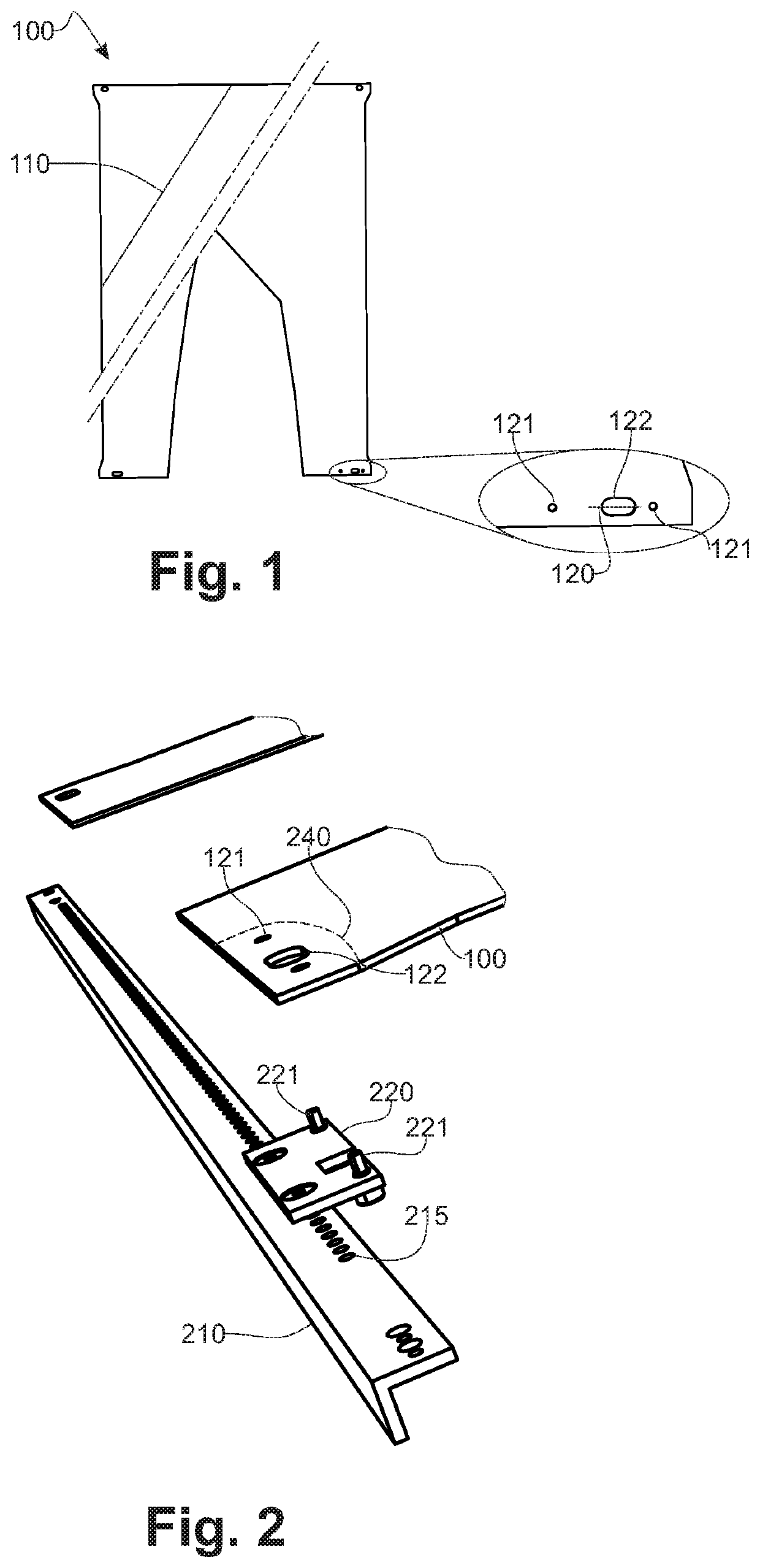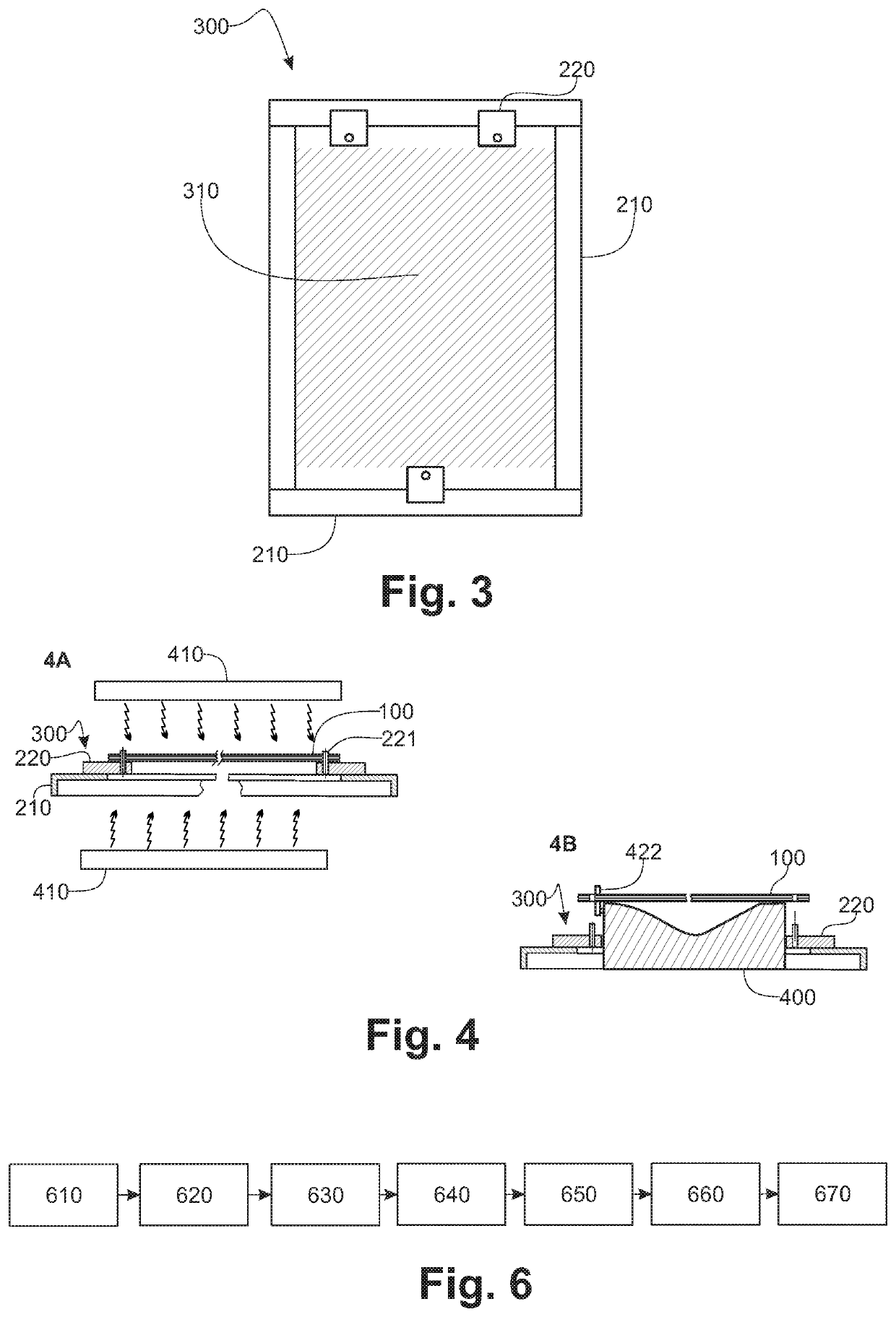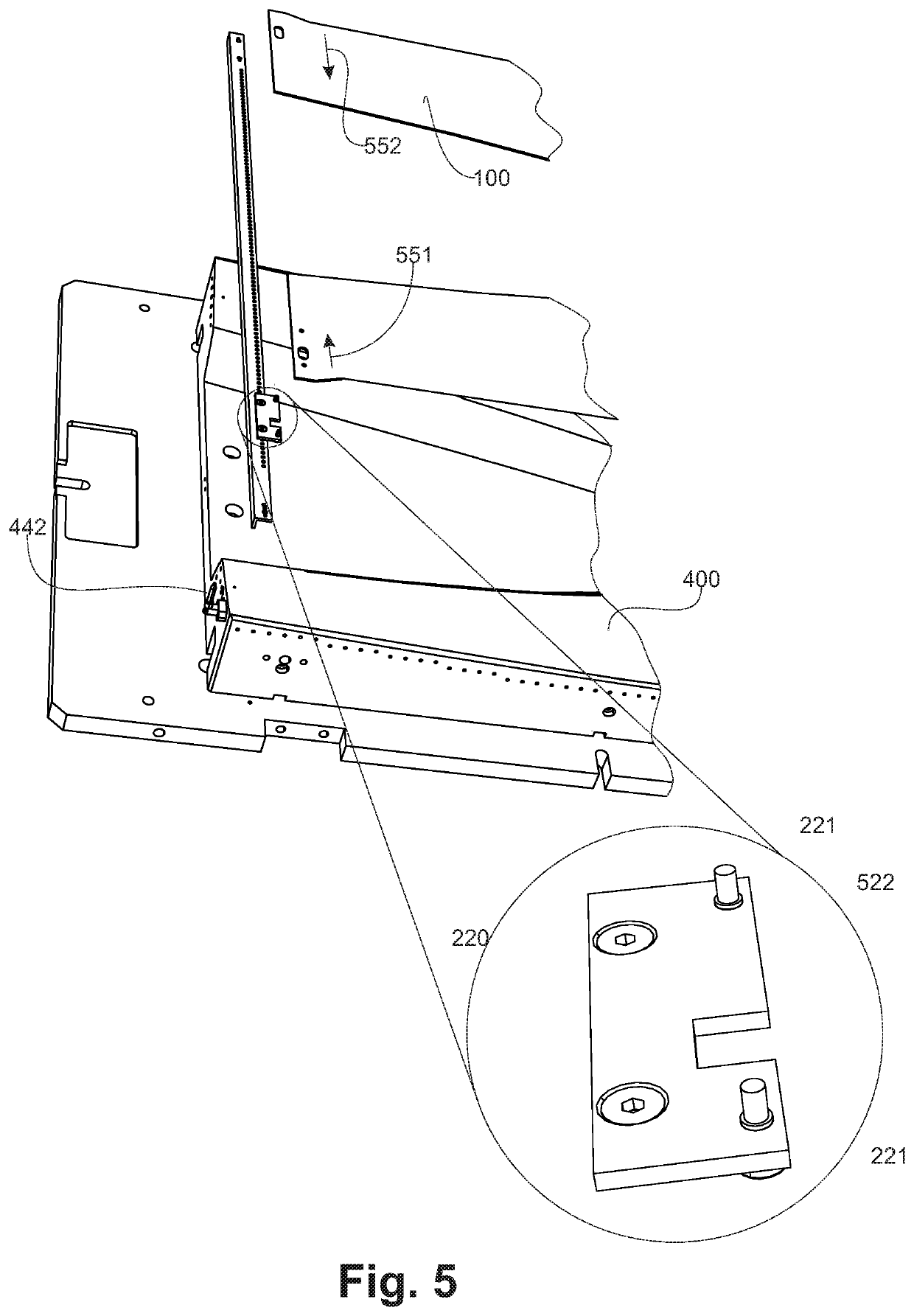Device and method for forming a composite panel from a thermoplastic matrix
a thermoplastic matrix and composite blank technology, applied in the field of apparatus and method for stamping thermoplastic matrix composite blanks, can solve the problems of high price, fiber undulation, and the prior art device proves to be poorly reliable in the framework of industrial production, and achieves the effect of simple and economical implementation
- Summary
- Abstract
- Description
- Claims
- Application Information
AI Technical Summary
Benefits of technology
Problems solved by technology
Method used
Image
Examples
Embodiment Construction
[0051]FIG. 1, according to an exemplary embodiment, the apparatus of the invention includes a consolidated machined composite blank (100). The blank (100) is made of one or several stratified layers including continuous fibrous reinforcements (110), meaning that they extend from one edge to another of said blank (100), in a matrix made of a thermoplastic polymer. This blank is called machined, meaning that prior to its forming by stamping, it is routed according to a defined contour. Said routing is performed by any method known from the prior art, especially, but not exclusively, by means of a cutting tool or using a high pressure water jet. These routing operations include the cut out of holes (121, 122) intended to receive positioning elements of said blank (100) according to a tooling repository.
[0052]FIG. 2, for its transfer from the heating station to the stamping tooling, the blank (100) is held by a frame which, according to this exemplary embodiment is made of an assembly o...
PUM
| Property | Measurement | Unit |
|---|---|---|
| thermal diffusivity | aaaaa | aaaaa |
| perimeter | aaaaa | aaaaa |
| viscosity | aaaaa | aaaaa |
Abstract
Description
Claims
Application Information
 Login to View More
Login to View More - R&D
- Intellectual Property
- Life Sciences
- Materials
- Tech Scout
- Unparalleled Data Quality
- Higher Quality Content
- 60% Fewer Hallucinations
Browse by: Latest US Patents, China's latest patents, Technical Efficacy Thesaurus, Application Domain, Technology Topic, Popular Technical Reports.
© 2025 PatSnap. All rights reserved.Legal|Privacy policy|Modern Slavery Act Transparency Statement|Sitemap|About US| Contact US: help@patsnap.com



